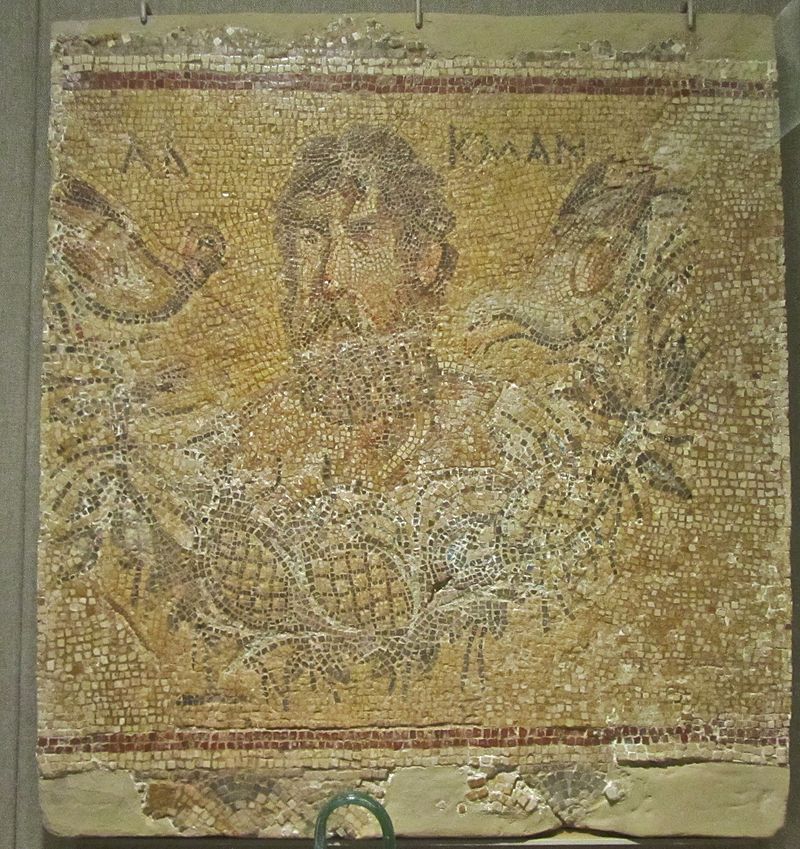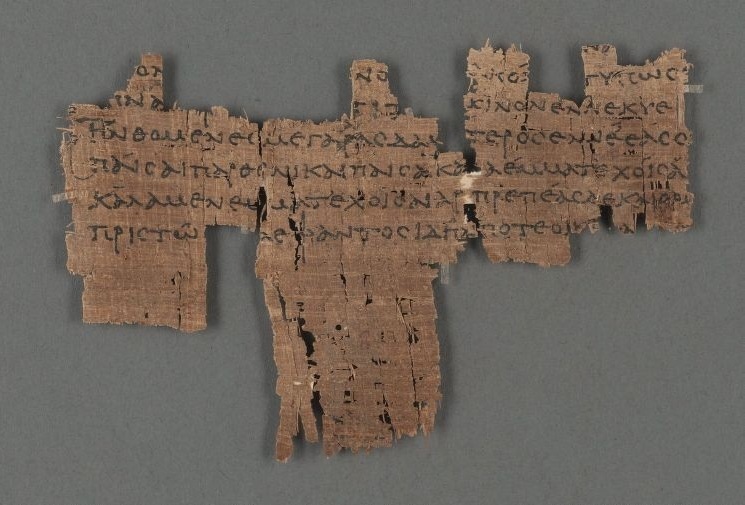<Back to Index>
- Lyric Poet Alkman of Sparta (Αλκμάν), 7th Century B.C.
PAGE SPONSOR


Alcman (also Alkman; Greek: Ἀλκμάν, gen.: Ἀλκμᾶνος; 7th century BC) was an Ancient Greek choral lyric poet from Sparta. He is the earliest representative of the Alexandrinian canon of the nine lyric poets.
The name of Alcman's mother is not known but his father may have been named either Damas or Titarus.
Alcman's nationality was a matter of dispute even in ancient days. Unfortunately, the records of the ancient authors were often deduced from biographic readings of their poetry and the details are often untrustworthy. Antipater of Thessalonica wrote that poets have "many mothers" and that the continents of Europe and Asia both claimed Alcman as their son. Frequently assumed to have been born in Sardis, capital of ancient Lydia, the Suda claims that Alcman was actually a Laconian from Messoa. The compositeness of his dialect may have helped to maintain the uncertainty of his origins, but the many references to Lydian and Asian culture in Alcman's poetry must have played a considerable role in the tradition of Alcman's Lydian origin. Thus, Alcman claims he learned his skills from the "strident partridges" (caccabides), a bird native to Asia Minor and not naturally found in Greece. The ancient scholars seemed to have referred to one particular song, in which the chorus says:
| “ | he was no rustic man, nor clumsy (not even in the view of unskilled men?) nor Thessalian by race nor an Erysichaean shepherd: he was from lofty Sardis. | ” |
Yet, given that there was a discussion, it cannot have been certain who was the third person of this fragment. Some modern scholars defend his Lydian origin on the basis of the language of some fragments or the content. However, Sardis of the seventh century BC was like modern Paris or New York, a cosmopolitan city. The implicit and explicit references to Lydian culture may be a means of describing the girls of the choruses as fashionable.
One tradition, going back to Aristotle, holds that Alcman came to Sparta as a slave to the family of Agesidas (= Hagesidamus?), by whom he was eventually emancipated because of his great skill.
Aristotle reported that it was believed Alcman died from a pestulant infestation of lice (phthiriasis),
but he may have been mistaken for the philosopher Alcmaeon of Croton.
According to Pausanias, he is buried in Sparta next to the tomb of Helen
of Troy.
There were six books of Alcman's choral poetry in antiquity (ca. 50 - 60 hymns), but they were lost at the threshold of the Medieval Age, and Alcman was known only through fragmentary quotations in other
Greek authors until the discovery of a papyrus in 1855(?) in a tomb near
the second pyramid at Saqqâra in Egypt. The fragment, which is now kept at the Louvre in Paris, France, contains approximately 100 verses of a so-called partheneion,
i.e., a song performed by a chorus of young unmarried women. In the
1960s, many more fragments were discovered and published in the
collection of the Egyptian papyri from a dig of an ancient garbage dump at Oxyrhynchus. Most of these fragments contain poems (partheneia), but there are also other kinds of hymns among them.
Pausanias says that even though Alcman uses the Doric dialect, which does not usually sound beautiful, it has not at all spoiled the beauty of his songs.
Alcman's songs were composed in the Greek Dorian dialect of Sparta (the so-called Laconian dialect). This is seen especially in the orthographic peculiarities of the fragments like α = η, ω = ου, η = ει, σ = θ and the use of the Doric accentuation, though it is uncertain whether these features were actually present in Alcman's original compositions or were added either by Laconian performers in the subsequent generations (Hinge's opinion) or even by Alexandrian scholars who gave the text a Doric feel using features of the contemporary, and not the ancient, Doric dialect.
Apollonius Dyscolus describes Alcman as συνεχῶς αἰολίζων "constantly using the Aeolic dialect". However, the validity of this judgment is limited by the fact that it is said about the use of the digamma in the third person pronoun Φός "his/her"; it is perfectly Doric as well. Yet, many existing fragments display prosodic, morphological and phraseological features common to the Homeric language of Greek epic poetry, and even markedly Aeolic and un-Doric features (σδ = ζ, -οισα = -ουσα) which are not present in Homer itself but will pass on to all the subsequent lyric poets. This mixing of features adds complexity to any analysis of his works.
The British philologist Denys Page comes to the following conclusion about Alcman's dialect in his influential monograph (1951):
| “ | (i) that the dialect of the extant fragments of Alcman is basically and preponderantly the Laconian vernacular; (ii) that there is no sufficient reason for believing that this vernacular in Alcman was contaminated by features from any alien dialect except the Epic; (iii) that features of the epic dialect are observed (a) sporadically throughout the extant fragments, but especially (b) in passages where meter or theme or both are taken from the Epic, and (c) in phrases which are as a whole borrowed or imitated from the Epic... | ” |
In his dissertation
on the dialect of Alcman (2001), the Danish philologist George Hinge
reaches to the opposite conclusion: that Alcman composed in the same
poetic language as Homer ("the common poetic language"); however, since
the songs were performed by Spartans, they were also transmitted with a
Laconian accent and written down with a Laconian orthography in the 3rd century BC.
To judge from his larger fragments, Alcman's poetry was normally strophic: Different meters are combined into long stanzas (9 - 14 lines), which are repeated several times.
One popular meter is the dactylic tetrameter (in contrast to the dactylic hexameter of Homer and Hesiod).
The type of songs Alcman composed most frequently appear to be hymns, partheneia (maiden songs Greek παρθένος "maiden"), and prooimia (preludes to recitations of epic poetry). Much of what little exists consists of scraps and fragments, difficult to categorize. The most important fragment is the First Partheneion or Louvre - Partheneion, found in the late 19th century in Saqqara in Egypt by the French scholar Auguste Mariette. This Partheneion consists of 101 lines, of which more than 30 are severely damaged. It is very hard to say anything about this fragment, and scholars have debated ever since the discovery and publication about its content and the occasion on which this partheneion could have been performed.
The choral lyrics of Alcman were meant to be performed within the social, political and religious context of Sparta. Most of the existing fragments are lines from partheneia. These hymns are sung by choruses of unmarried women, but it is unclear how the partheneia were performed. The Swiss scholar Claude Calame (1977) treats them as a type of drama by choruses of girls. He connects them with initiation rites.
The girls express a deep affection for their chorus leader (coryphaeus):
| “ | For abundance of purple is not sufficient for protection, nor intricate snake of solid gold, no, nor Lydian headband, pride of dark - eyed girls, nor the hair of Nanno, nor again godlike Areta nor Thylacis and Cleësithera; nor will you go to Aenesimbrota's and say, 'If only Astaphis were mine, if only Philylla were to look my way and Damareta and lovely Ianthemis'; no, Hagesichora guards me. | ” |
| “ | I were to see whether perchance she were to love me. If only she came nearer and took my soft hand, immediately I would become her suppliant. | ” |
Earlier research tended to overlook the erotic aspect of the love of the partheneions; thus, instead of the verb translated as "guards", τηρεῖ, at the end of the first quotation, the papyrus has in fact the more explicit τείρει, "wears me out (with love)". Calame states that this homoerotic love, which is similar to the one found in the lyrics of the contemporaneous poetess Sappho, matches the pederasty of the males and was an integrated part of the initiation rites. At a much later period, but probably relying on older sources, Plutarch confirms that the Spartan women were engaged in such same sex relationships. It remains open if the relationship also had a physical side and, if so, of what nature.
Other people, among them Hutchinson and Stehle, see the First Partheneion as a song, composed for a harvest ritual and not as a tribal initiation. Stehle argues that the maidens of the Partheneion carry a plough (or, in the most translations: a robe) for the goddess of Dawn. This goddess of Dawn is honored because of the qualities she has, especially in harvest time when the Greeks harvest during dawn (Hesiod, Works and Days, ll. 575 - 580: "Dawn gives out a third share of the work [that is, harvesting]"). The heat (embodied by the Sirius star) is a threat for the dawn, so the chorus tries to defeat him. In the meanwhile the chorus members present themselves as women ready for marriage. Stehle doesn't agree with Calame about the initiation rituals, but cannot ignore the 'erotic' language that the poem expresses.
Some scholars think that the chorus was divided in two halves, who
would each have their own leader; at the beginning and close of their
performance, the two halves performed as a single group, but during most
of the performance, each half would compete with the other, claiming
that their leader or favorite was the best of all the girls in Sparta.
There is, however, little evidence that the chorus was in fact divided.
The role of the other woman of Alcman's first partheneion,
Aenesimbrota, is contested; some consider her indeed a competing
chorus leader, others think that she was some sort of witch, who would supply the girls in love with magic love elixirs like the pharmakeutria of Theocritus's Second Idyll, and others again argue that she was the trainer of the chorus like Andaesistrota of Pindar's Second Partheneion.
Alcman could have composed songs for Spartan boys as well. However, the only statement in support of this idea comes from Sosibius, a Spartan historian from the 2nd. c. BC. He says that songs of Alcman were performed during the Gymnopaedia festival (according to Athenaeus):
| “ | The chorus - leaders carry [the Thyreatic crowns] in commemoration of the victory at Thyrea at the festival, when they are also celebrating the Gymnopaedia. There are three choruses, in the front a chorus of boys, to the right a chorus of old men, and to the left a chorus of men; they dance naked and sing the songs of Thaletas and Alcman and the paeans of Dionysodotus the Laconian. | ” |
Regardless of the topic, Alcman's poetry has a clear, light, pleasant tone which ancient commentators have remarked upon. Details from rituals and festivals are described with care, even though the context of some of those details can no longer be understood.
Alcman's language is rich with visual description. He describes the yellow color of a woman's hair and the golden chain she wears about her neck; the purple petals of a Kalchas blossom and the purple depths of the sea; the "bright shining" color of the windflower and the multi - colored feathers of a bird as it chews green buds from the vines.
A lot of attention is focused on nature: ravines, mountains, flowering forests at night, the quiet sound of water lapping over seaweed. Animals and other creatures fill his lines: birds, horses, bees, lions, reptiles, even crawling insects.